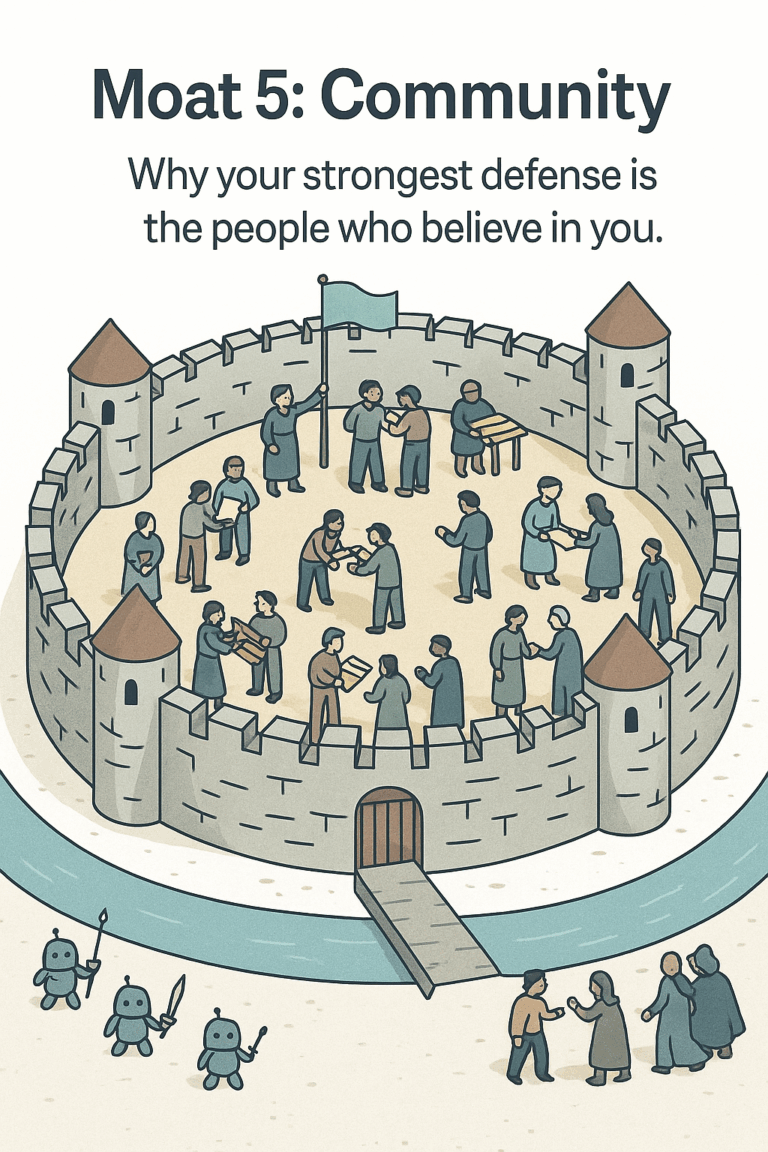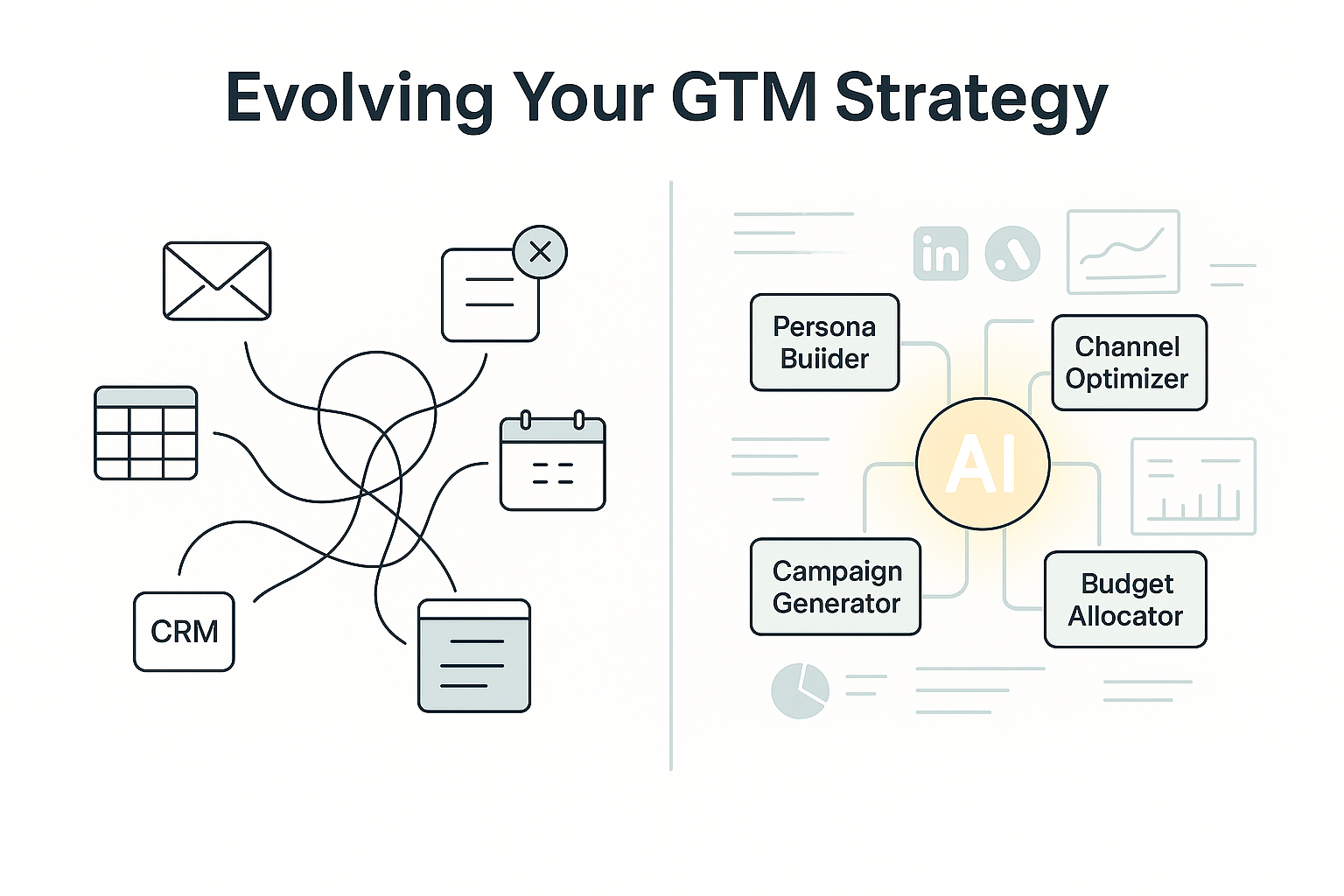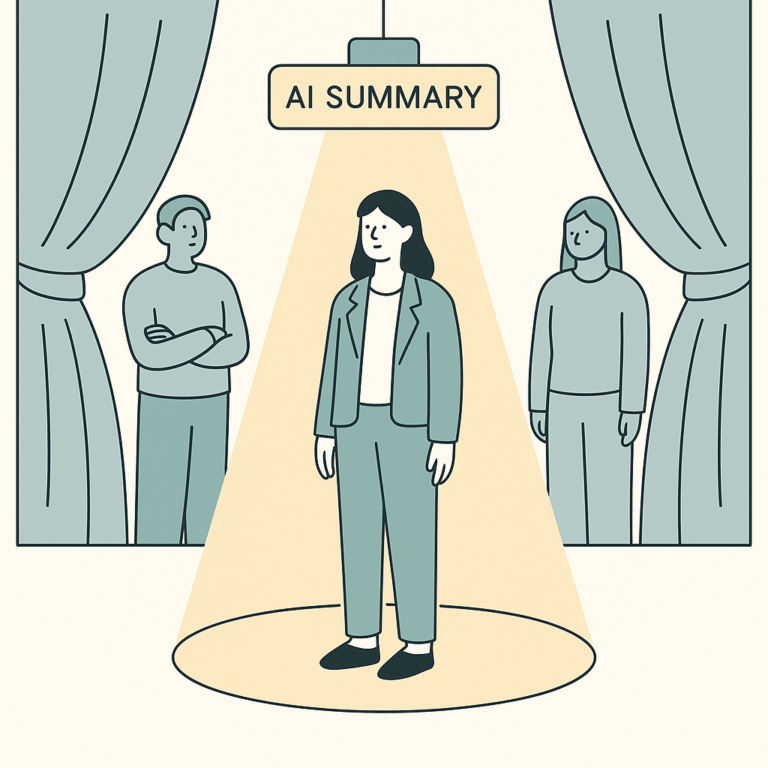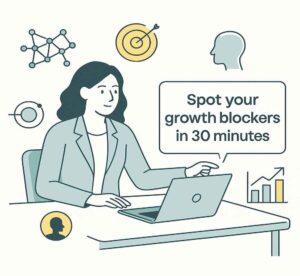How Community Becomes the Ultimate GTM Moat in AI-First Era

Community as the shield competitors cannot breach
This is where your GTM defense becomes human. Buyers listen to people they trust, not brands. Advocacy, shared knowledge, and peer-to-peer proof turn a group of users into a wall no AI can topple.
This is Part 5 of the AI Moats series. If you’re new here, start with
Moat 1: Data, then move through
Moat 2: Trust,
Moat 3: Distribution, and
Moat 4: System Design.
Each of these builds the foundation. Community is where the threads come together. Data shows the signals, trust makes them believable, distribution gets the message out, systems keep it running but none of it sticks without people who repeat your story because they believe in it.
When everything else feels shaky, people hold the line. Technology changes, campaigns get copied, budgets shift, and AI accelerates all of that. What holds steady is how people act inside your company and how they show up outside it.
Culture and community together form the moat that competitors can’t crack overnight.
Inside the walls
Culture is the reason a team keeps pushing when things are rough.
Updating Salesforce with full context even when nobody is checking, because someone else depends on that note tomorrow.
Engineers jumping into Slack threads to answer sales questions without a ticket.
A marketer fixing an ops workflow at midnight because the next morning’s launch depends on it.
That invisible fabric is culture. You can’t announce it or decorate the walls with it. It lives in habits, shared language, rules people follow when nobody is watching.
Outside the walls
Community is what customers and advocates build when they care enough to keep it alive.
A CFO checks with another CFO before signing and hears, “we rolled it out and it worked.”
In private groups like RevOps Co-op or Product Marketing Alliance, your name comes up unprompted.
Open-source ecosystems like PostHog where contributors help each other and the company becomes one voice, not the only voice.
That’s when you know community is a moat.
Proof it works
Reddit: millions of groups guard their own spaces without budgets or marketing. Rules, ownership, belonging — that’s the defense.
Figma: designers ran meetups, built templates, shared workflows. The community spread the product faster than ads ever could.
Notion: users created guides and workspaces that pulled peers in. Growth came from them, not campaigns.
Basecamp: opinionated building shaped both culture and GTM. Employees and customers stayed because the stance was clear.
My lived version
I lean on GrowthMentor constantly. Founders and marketers give raw feedback. I test messaging, stress-test campaigns, and catch blind spots in real time. That loop is a moat in my own work — a defense no competitor can copy because it’s built on years of trust and exchange.
How culture and community tie the others together
Data is stronger when people feed it with clean signals.
Trust spreads when communities carry it.
Distribution accelerates when advocates push it forward.
Systems hold only when culture makes them stick.
Culture ensures the inside holds. Community ensures the outside grows.
How to build
Culture:
Weekly reviews about what changed, not who to blame.
Documented playbooks so new hires onboard faster.
Hiring for curiosity and ownership, not keyword-stuffed résumés.
Promotion paths that reward collaboration over politics.
Community:
Show up where people already gather — don’t drag them into dead branded forums.
Seed conversations with benchmarks and proof, not self-promotion.
Put customers on stage to teach, not to parrot your messaging.
Amplify signals from community so they circulate into your GTM loop.
Signals the people moat is working
Customers defend you before your team can respond.
Advocates share screenshots and proof in places you don’t control.
Events and meetups keep bringing the same faces back with new ones listening in.
Inside, teams act without waiting for approvals because they know what matters.
Knowledge survives reorgs. Talent sticks around because they see growth.
Cracks to watch
Communities that die because they were treated like lead farms.
Cultures where data is hoarded in silos and execution clogs.
Teams slowing down because nobody trusts each other enough to move.
These look small until pressure hits. That’s when they become fatal.
The moat test
If ads were cut tomorrow, would people still talk about you in their networks?
If leadership turned over, would execution survive because culture carried it?
If either answer makes you pause, the people moat is fragile.
Pulling it all together
We’ve now walked through all five moats.
Data: the signals only you can see.
Trust: the credibility that moves deals faster than features.
Distribution: the reach you own so nobody can pull it away.
System design: the wiring that keeps learning and adapting.
Community and culture: the human shield, inside and out.
AI accelerates the collapse of weak advantages. Content, campaigns, and features get copied faster than ever. What survives are the moats that build over time and resist pressure.
So the gut check is simple: Which moat in your setup would snap first? Because that’s where a competitor will press hardest.
👉🏽 If you missed earlier pieces, start with Moat 1: Data and work forward. If you’ve read them all, this is the close. The work now is building edges AI cannot erase.
READ NEXT
AI-First GTM Operating Model
When every competitor claims credibility, buyers look for proof that can’t be faked. Let's see how companies turn transparency, evidence, and consistency into a moat that closes deals faster.


Jahnavi Ray is a data obsessed marketing leader with 17+ years of experience driving demand, building GTM engines, and mentoring growth-stage B2B teams. She’s led marketing inside startups, scaled systems at global SaaS companies, and now shares her playbooks to help founders and marketers turn chaos into clarity, and pipeline into predictable revenue. When she’s not mapping growth ecosystems or coaching on GrowthMentor, you’ll find her practicing yoga, chasing her two gremlins, or building something meaningful in Toronto.
